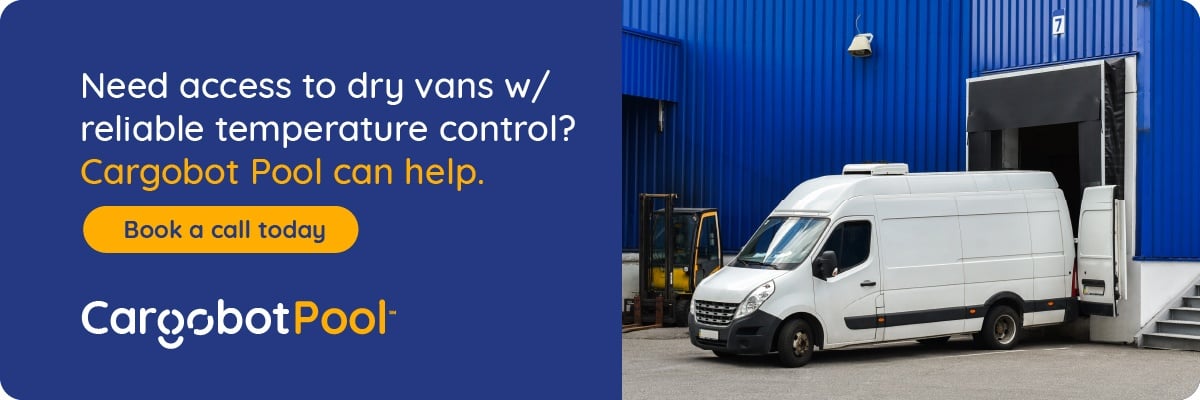Partial Truckload Logistics: The Secret to Cost-Effective Shipping
Are you embarrassed you lost money from overbooking trucks to move PTL freight? If your organization frequently needs to move shipments that fall between LTL freight and FTL shipping, finding carriers that understand PTL shipping is absolutely critical.
Done right, partial truckload logistics can help you save money and ship items with greater efficiency. Managed poorly, this method can result in longer transit times as items for completely different end destinations get packed on the same trucks.
If you’re interested in learning more about partial truckload freight, you’ve come to the right place.
Key Considerations for Choosing Partial Truckload Logistics

There are a few factors to be aware of when choosing partial truckload logistics for your shipping. The first of these is shipment size and weight. Partial truckload loads generally fall between 8,000 and 27,500 pounds.
This contrasts with full truckloads that are usually between 28,000 and 48,000 pounds. PTL trailers are 20-40 feet long, coming in far shorter than FTL trailers at 53 or more feet long. If your shipment weighs less than 8,000 pounds, you’ll probably be better off shipping LTL.
Generally, shipments weighing over 27,500 pounds are shipped in the full truckload shipping category.
The second factor is transit time. With the right provider, PTL can give you faster transit times, enabling you to move shipments with less handling (reducing the risk of product damage) and fewer stops. If you’ve been running into issues with getting deliveries to their destination on time, PTL can help.
The third major consideration is cost. If you’re tired of losing money due to poor supply chain logistics, partial truckload shipping from a reliable partner can help you be more cost-efficient.
Instead of paying for full trucks, you only pay for the space you need for your shipments. Furthermore, PTL is free of accessorial add-ons and price hikes that can come with other logistics like FLT and LTL shipments. This can lead to massive savings.
Certain freight is better suited for partial truckload freight shipping than others. Below, you’ll find a list of the different types of goods that can be best shipped with this method:
- Electronics
- Consumer goods
- Drygoods
- Refrigerated goods
- Frozen shipments
- Building materials
- And more…
Partial shipment can provide the flexible option often missing in many supply chain strategies. By providing a cost-effective option for shipments that fall between the ideal LTL and FLT loads, PTL helps businesses optimize their transportation spend and deliver shipments faster.
How to Optimize Partial Truckload Logistics for Cost Savings

Organizations can employ several different tactics and strategies to get the most out of their truckload logistics. One of the ways to reduce costs is to maximize truck utilization.
By filling the truck’s available space as much as possible, businesses can reduce the cost per unit shipped. PTL also allows for consolidating shipments – grouping smaller shipments together to fill trucks, lowering costs and increasing efficiency. Organizations can also get lower costs by negotiating better rates with carriers.
Because carriers are regional, negotiating with specific providers is often possible to get more affordable prices. The key to effective negotiation is a strong understanding of the market rates and finding reputable carriers willing to negotiate.
Technology can also help with optimization. Transportation management systems and data analytics can provide valuable insights that can be used to improve shipping performance and identify cost-saving opportunities.
For example, the most efficient routes can be discovered through data analytics and implemented across your shipments to reduce costs. You can also use technology tracking to identify issues proactively and address them before they grow into a crisis.
In the modern world, organizations will need to leverage technology increasingly to remain competitive.
Challenges and Solutions in Partial Truckload Logistics

Although partial truckload shipping does have its benefits, this method has its challenges. Because PTL shipments are often combined with other deliveries, there is a potential for unpredictable delivery times. Another challenge is capacity constraints.
As we have already outlined, there are freight shipments that are smaller and larger than PTL shipments that are better served with other logistics solutions.
Communication issues can also crop up, impeding your ability to know what is happing with your shipping. Carriers might be in different time zone differences, and contacting them can sometimes be challenging.
Finally, pricing can be a major challenge regarding partial truckload shipments. Although it can be more affordable, carriers may charge different rates based on shipment size, weight, distance, and other factors. Comparing and finding the most affordable carriers can be even more difficult with PTL logistics.
On the other hand, all of these challenges can be solved through the power of technology. A solution like Cargobot can provide real-time tracking and visibility into shipping status, enabling you to correct issues and adjust delivery schedules as needed.
Do you need your freight broker to help anticipate supply chain issues? Cargobot can help you find the most affordable carriers and schedule your shipment methods to work around any capacity constraints you may run into.
Furthermore, this platform can help with communication issues by facilitating real-time communication.
Negotiating Rates and Contracts with Partial Truckload Logistics Providers
When it comes to negotiating the best rates and contracts with partial truckload logistics providers, you need to be aware of the factors that can influence pricing. These include:
- Market Rates
- Shipment Volume
- Frequency of Shipments
- Destination
It’s important to always understand market rates before entering into negotiations. Do your research and know what these carriers can expect to get for their services. The required shipment volume and frequency of shipments can be reduced with PTL providers through consolidation.
When it comes to destination, remember that carriers are regional. It’s often best to find carriers with expertise in the specific geographic region you are delivering to.
Establishing a regular shipping schedule is one of the best strategies to negotiate rates. Organizations with regular shipping schedules can negotiate better rates and terms with logistics providers.
Finally, always be willing to consider alternative providers. To be in the best position from a negotiation perspective, it’s best to keep your options open by finding multiple providers to choose from. That way, you can negotiate better 4rates and terms and ensure that your shipping needs are met.
Coordinating Shipments with Other Shippers for Optimal Utilization
Coordinating shipments with other shippers can bring various benefits to your business. These include cost savings, increased efficiency, and improved capacity.
For example, suppose you are a smaller shipper that does not have the volume to negotiate lower rates with carriers. In that case, you can get this negotiation power by collaborating with larger shippers.
The first step to coordinating shipments is identifying potential partners. Try to find shippers with similar shipping needs and who may be interested in consolidating. Reach out to industry associations, trade groups, and anywhere else these shippers are likely to be.
Then, connect with these potential partners and get an open line of communication created between you and them. Share information about your shipping needs and schedules. Once you have shared your data and agreed on a plan, you can start coordinating your shipping schedules. Remember that you will likely not hit upon the best solution right off the bat.
Having a continuous improvement strategy that adjusts your coordination based on tracking data and analytics will lead to the best success in the long run.
Leveraging Technology and Data Analytics in Partial Truckload Logistics
When it comes to finding solutions for tough problems in the logistics space, businesses must make use of technology and data analytics in order to achieve full optimization. When it comes to partial truckload logistics, there are three main groups of tools that can help your business.
- Tracking and Analytics Software
- Digital Platforms
- Automation Tools
Tracking and analytics software gives you the power to monitor your shipments in real-time to get insight into transit times, delivery accuracy, and areas of improvement.
The best digital platforms connect your business with reputable providers and carriers, streamlining communication and making finding the services you need easy. These solutions enable companies to quickly and efficiently compare rates and communicate with carriers.
Finally, automation tools can take care of routine tasks like order processing, shipment scheduling, and invoicing, freeing up your staff to focus on higher-level tasks like managing relationships with carriers.
Ensuring Consistent and Reliable Partial Truckload Logistics Performance
Keeping your partial truckload logistics performance consistent and reliable is critical. Without high-quality service, delayed deliveries, increased transportation costs, reduced efficiency, and decaying customer relationships can negatively impact your business.
Is your current method for finding experienced freight carriers just not cutting it? Fortunately, there is a powerful tool that provides tracking capabilities, communication features, and automation tools to help you achieve this high-level performance. It’s called Cargobot Pool.
Cargobot represents the single most effective way to improve your partial truckload logistics and ensure that they remain consistent. With its powerful features, easy-to-use interface, and time-saving billing tools, you can get access to all you need in one convenient location.
Get your personalized quote today to achieve a more cost-effective shipping strategy!
Read More About Shipping Your Freight More Efficiently This Year:
- How to Choose the Best PTL Transport Solutions Partner
- 5 of the Biggest Headaches Facing PTL Shipping This Year
- 5 Ways Partial Truckload Companies Can Improve Their Supply Chain
- How PTL Shipping Companies Can Keep up with the Latest Technology Demands
- 5 Ways Refrigerated Trucking Companies Can Keep Up w/ Industry Demands
- Consolidated Freight Shipping: 5 Simple Hacks for Slashing Costs
- Faster Partial Truckload Shipping: Expert Tips for Stronger Operations


